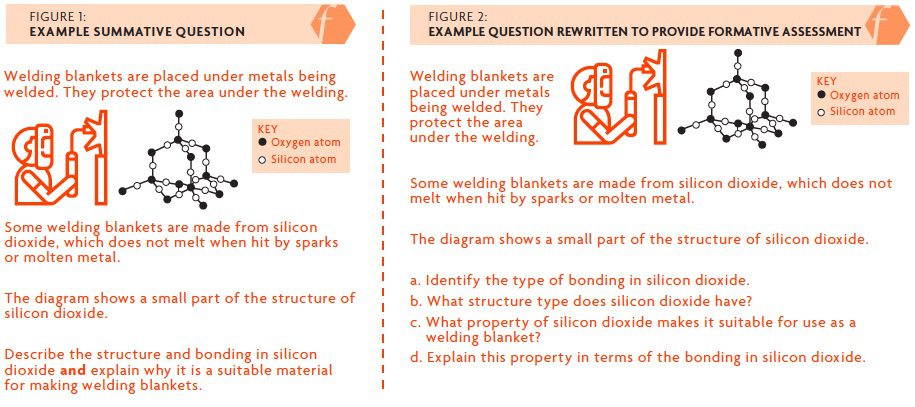Maximising impact by defining purpose in formative assessment

Helen Skelton, Head of Science, Beaumont School, UK
Formative assessment has the power to transform learning, since it yields evidence that is used to adapt teaching to meet student needs. As Black and Wiliam (1998, pp. 1–2) put it, ‘Teachers need to know about their pupils’ progress and difficulties with learning so that they can adapt their own work to meet their needs.’ In my practice, assessment had become largely synonymous with ‘book marking’ or ‘tests’, resulting in the loss of valuable opportunities to interrogate students’ learning at the granular level required to effectively support them. An assessment will only provide such information if it is crafted for that specific purpose (Kime, 2017). Learning about assessment theory exposed my flawed understanding of effective formative assessment, which should be low-stakes and diagnostic (Christodoulou, 2016). Assessment of (summative) and not assessment for (formative) learning had come to dominate my practice. Here I reflect on an example from my experience to illustrate how purposefully designing assessments is reshaping my classroom practice. This example is from science, but the principles are applicable across subject areas.
Three key principles underpinned my thought processes:
- New things are understood in the context of what we already know (Willingham, 2009)
- Effective teaching requires knowledge of students’ learning – gleaned from formative assessment (Black and Wiliam, 1998)
- Effective assessments are designed for one specific purpose (Kime, 2017).
‘Structure, bonding and the properties of matter’ is a GCSE chemistry topic. Students are required to recognise structure types, and describe and explain their structure, bonding and properties. My practice was to test students using exam questions. Students needed to be able to answer such questions in their GCSE exams, so surely this was a valid test of their understanding?
Specific feedback addressing misconceptions and developing understanding is crucial to learning. However, when considering students’ test answers, I could not pinpoint where their knowledge was lacking. The tests revealed that many students were unable to answer exam questions that required identification of a structure type and explanation of its properties in relation to the nature of the bonding (example in Figure 1). Because so many elements were necessary to successfully answer most questions, identifying the root cause of the poor answers, or where my students’ understanding was breaking down, was impossible.
Subsequently I rewrote the questions, breaking them down into smaller steps (example in Figure 2). This assessed the same knowledge, but the more structured questions enabled identification of the specific lack of knowledge or understanding. Was it the factual knowledge, the identification of the correct structure type, or the ability to explain how the microscopic structure affects the macroscopic properties of the material? Or was this knowledge secure, but students were unable to apply it in the context of the question? This more granular knowledge of the understanding of my students enabled me to provide tailored feedback and additional targeted practice. For example, I was able to review the processes of identifying the structure and bonding type or explaining the relationships between the properties and the structure of materials, modelling these processes through worked examples, before giving students independent practice in specific areas where their knowledge was weaker, either during lesson time or at home.
Over time, students gained confidence in tackling these step-by-step problems, which subsequently enabled them to bring the now-familiar processes of identifying bonding, structure and properties and explaining the links between them together, to successfully answer more complex exam questions.
Trying to extract formative information, which is vital for learning, from answers to summative questions will never be as effective as using a question written for formative purposes. This reflection on my practice has led me to move towards more frequent low-stakes formative assessments combined with occasional summative tests, each designed and written specifically for their intended purpose.
References
Black P and Wiliam D (1998) Inside the Black Box: Raising Standards Through Classroom Assessment. London: King’s College School of Education.
Christodoulou D (2016) Making Good Progress? The Future of Assessment for LearningKnown as AfL for short, and also known as formative assessment, this is the process of gathering evidence through assessment to inform and support next steps for a students’ teaching and learning. Oxford: Oxford University Press.
Kime S (2017) Four pillars of assessment: Purpose. In: Evidence Based Education. Available at: https://evidencebased.education/pillars-assessment-purpose (accessed 18 February 2020).
Willingham D (2009) Why Don’t Students Like School? San Francisco: Jossey-Bass.











